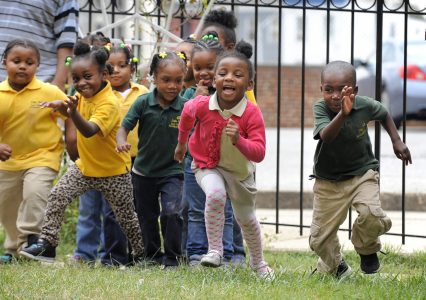Few weeks ago, Mrs Adeboye received a call from her son’s school that he had been rushed to the hospital with a head injury as a result of falling on the playground. As parent, when your child goes to school, you feel that he/she will be safe because they are entrusted in safe hands. And this includes when your child takes the school bus.
Accidents can happen at anytime and anywhere – school, home, church, mosque, playground, swimming pool, etc. However, we can put some things in place to avoid them. Back to our question – Is Your School Safe Enough?”
Every school and teacher should realise that keeping a child safe is one of their top priorities. A safe learning environment is not only preventing accidents but also keeping a child safe from bullying, cyber bullying, victimisation, assaults, sexual abuse and drugs.
Here are 5 ways to improve school safety.
- Have a school safety policy and ensure regular updates: Does your school have a documented and communicated safety policy? Every school must have safety policies and procedures that cover all activities that happen in the school including the school bus. New incidents and considerations will likely come up during the school year and updating your plan to reflect this information ensures you’re considering the best safety measures for your school. Don’t forget safety resources and supplies and staff training, too.
- Ensure staff, students and parents are aware of all safety policies: School safety rules should be readily available to every person who enters your building. Teachers and students must be aware of all policies. Use a combination of written rules, pictures, videos, staff meetings and assemblies to share safety policies. Ensure communication of safety rules happens frequently
- Have an emergency response plan: How should teachers, students and other staff respond during an emergency? – fire, health, accidents, etcAny emergency response plan should include how to prevent emergency, how to prepare for emergencies, how to respond in times of emergencies. Every school must have fire drills and teachers must know how to perform CPR, revive chocking child, etc.
- Set and Monitor Safety Targets: It’s not enough to have safety policies, it’s more important to ensure they are adhered to.Everyone needs to be aware of the safety target for the school and it should form a key part of everyone’s appraisal. All safety incidents must be reported, and lessons learnt and shared on how to prevent reoccurrence. Behaviours that promote child’s safety in the school must be recognised and awarded to buttress the commitment to safety.
- Make learning about Safety fun: When learning is fun, you can be sure that children will be engaged and will more likely remember the rules. Have safety theme and decorate the school to make it visually appealing. Organise a Safety Week packed with fun activities (plays, dress up, field trips, talks, talent show, parade, etc) to educate the children about safety rules. Also play fun games like 9ijakids Safety 101 or Protecting Our Body to teach about safety. Visit our website to learn more
Educating every child about safety can never be too much. Every child needs to know about general safety rules at home/school, stranger safety, internet safety, road safety and about protecting their bodies.
We have put together a checklist for school safety. Click here to download 9ijakids School Safety Checklist. Don’t keep this to yourself. Share with other school owners and Heads of School in your network.


